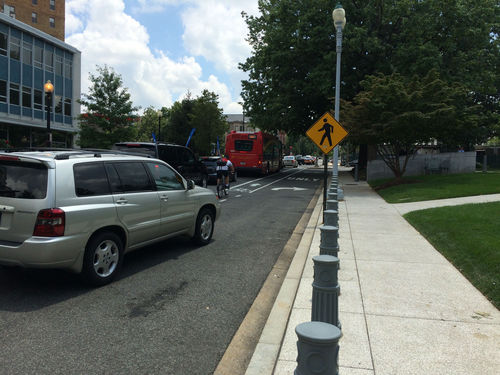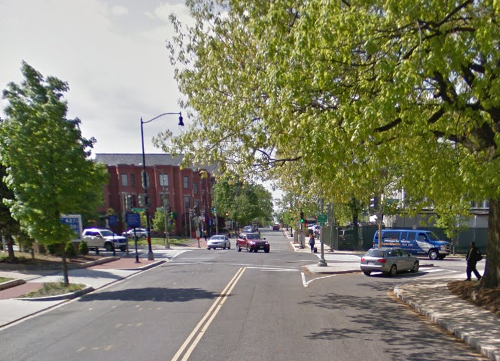These two new short bike lanes, called “pocket lanes,” help traffic flow and keep cyclists safe
There are some unusual new bike lanes at two intersections in DC. They keep traffic moving more smoothly and protect cyclists from a dangerous situation: where they’re going straight but a driver to their left is turning right.
The District Department of Transportation recently installed “pocket lanes” on southbound 2nd Street NE at Massachusetts Avenue and at Hawaii Avenue and Taylor Street NE. A type of through bike lane that’s less than a block long and doesn’t continue on the other side of the intersection, they sit between the lane for going straight or turning left and the right turn lane.
Pocket lanes have several uses, and they make intersections more efficient for everyone. For starters, they keep people on bikes who are heading straight through an intersection from having to wait behind a queue of left-turning vehicles, whose drivers are in turn waiting for a break in oncoming traffic. They also keep drivers from having to wait in line behind a cyclist who’s traveling straight.
Another benefit is that they give people on bikes their own space that’s to the left of right-turning traffic, which prevents a situation known as the “right hook.” The “right hook” occurs when a driver who’s turning right hits a cyclist riding on the right hand side of traffic and going straight.
With the 2nd Street example, traffic often backs up there because there’s only one lane for either continuing straight on 2nd or turning left onto Massachusetts. The pocket lane allows cyclists to ride past the backed up traffic, and to be to the left of cars turning right. Here’s what the intersection looked like before the new pocket lane:
Here’s a shot of the pocket lane at Hawaii and Taylor:
These lanes work when engineers can narrow the adjacent travel lanes to fit a pocket lane beside a right-turn only lane. Protected bike lanes are still the safest option, but in places where space is constrained this can make cycling more efficient and possibly safer.
DDOT is actively looking for more locations where they can add pocket lanes. If you have suggestions, contact Mike Goodno (mike.goodno@dc.gov).



